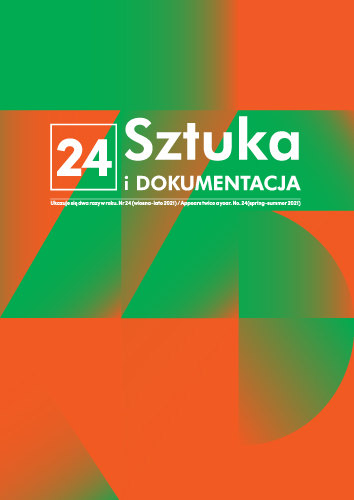HEIDEGGER I SZTUKA
HEIDEGGER AND ART
Introduction
Contributor(s): Bogusław Jasiński (Editor)Subject(s): Fine Arts / Performing Arts
Published by: Akademia Sztuk Pięknych w Gdańsku
Keywords: Heidegger; art; work of art; source of artwork; phenomenology; Vincent van Gogh; truth in painting; interpretation
Summary/Abstract: Below we present a set of texts inspired by the way Heidegger interpreted art. The perspective here is wide, and apart from his essay The Origin of the Work of Art, it encompasses his whole philosophical output. Thus, we follow here all the aesthetic implications possibly arising from the philosopher’s research on metaphysics, epistemology and ontology. In short, we are focused not solely on what the philosopher explicitly said or wrote about art, but also on what he could have or even should have said about it that stemmed from his more general philosophical reflections. Still, what should remain widely interesting to contemporary critics and artists is the reflection upon the status of the artistic object itself. Since, having observed that a work of art remains a work of art as long as its creator calls it one, a whole new perspective has been thrown upon aesthetics, and it resigns from restricting artworks to static objects. This makes it possible to use discursive methods when analyzing contemporary performance art as well as various manifestations of ephemeral art. This perspective is tempting and it is definitely worthy of reflecting upon. But is there anyone who can actually live up to it?For what are van Gogh’s famous shoes which Heidegger wrote about in The Origin of the Work of Art? They cannot only be a certain object of art, a certain depiction of form and colour - as there is a whole story connected with the object. Thus, Heidegger emphatically described the toil of the simple woman who worked in the field every single day in order to feed her family - pointing out the truth that lives within the crooked and soiled material of her shoes. That is how a certain story, in itself not artistic, becomes part of a work of art. Does it not remind one of contemporary and conceptual art? What then becomes of a work of art: does it remain what we can see, or it may also be what we know, even think of it? These are undoubtedly fascinating questions which in this very form have – most probably – eluded the scholars researching the philosophy of Heidegger.This selection of materials on Heidegger includes a new translation of The Origin of the Work of Art that is distributed along with each copy of the Art and Documentation no. 24. All texts in this issue tackle strictly aesthetic questions introducing the reader to the whole of Heidegger’s philosophy, which forms a background highlighting the outlines of those questions.
Journal: Sztuka i Dokumentacja
- Issue Year: 2021
- Issue No: 24
- Page Range: 31-31
- Page Count: 1
- Language: Polish

